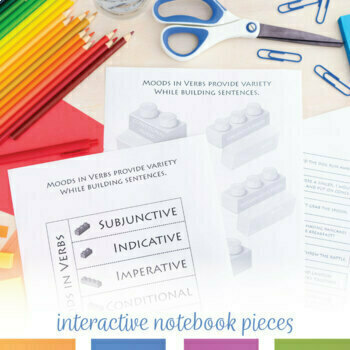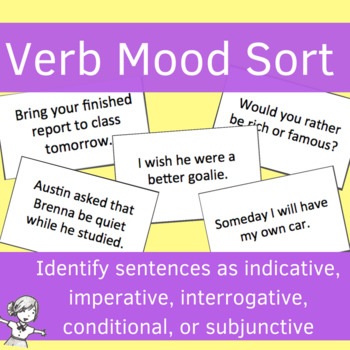
"It is important to drink a lot of water. Following are examples of sentences using verbs more like a part of speech: Such usage of the verb indicates an expression or state of being and is commonly known as infinitive mood. Sometimes, verbs are used in sentences more like a part of speech than as a verb. ESL Feelings and Emotions Worksheet - Vocabulary Exercises: Ordering, Identifying, Gap-fill, Categorising, Writing Sentences - Speaking Activity: Guessing - Pair Work - Pre-intermediate (A2) - 35 minutes. One mood students will learn about early on is the imperative. There are now 55 mood related worksheets that can help you when planning lessons on this topic. "I were educated I would be the president of this country." For worksheets on mood you have come to the right place. Following are examples of sentences using verbs to indicate these moods: These three moods are collectively known as subjunctive moods. Sometimes, verbs used in sentences express a possibility, wish or unreal situation. "Sun rises in the east and sets in the west." These three moods are collectively known as indicative moods. Most verbs are used in sentences in a manner that expresses either a denial, assertion or questions. Following are examples of sentences using verbs to indicate these imperative moods: These three moods are collectively known as imperative moods. Most verbs are used in sentences in a manner that expresses either a request, advice or command.

Given below is a brief description of each of these types along with their subtypes: The use of these mood indicating verbs in sentences shows the speaker's attitude, reality and states. The moods indicated through verbs have been roughly divided into four main types - imperative mood, Indicative mood, subjunctive mood and infinitive mood. For fun, end your lesson with one or more videos of the famous Muppet the Swedish Chef.Verbs are a part of speech that not only express an action or state of being, but can also indicate the mood and manner of the speaker. Either way, your students will be putting the imperative to good use as they speak in front of your class. This is a great activity for 1st and 2nd-grade students who can work on literacy, motor, and critical thinking skills.

VERB MOODS INTERACTIVE ACTIVITY HOW TO
Alternately, you may want your students to take a lighthearted approach and demonstrate how to make a fictional dish with real or fictional ingredients they might find in the classroom. You can request a serious tone and perhaps even ask your students to bring the food in and make the dish in class. Follow by having your students do their own cooking demo in front of the class. Watch the video again and challenge your students to make note of any imperative verbs the chef uses.

Point out that as the actor/chef makes the recipe, he or she is giving instructions with the imperative mood to the viewer. There are hundreds of cooking demos available on YouTube, so choose one that your students may like and show it to the class. You may want to make a list of all the verbs your students find and review their definitions, especially cooking specific verbs, as a class.īesides written recipes, many cooking demonstrations use the imperative to communicate with their viewers how to make a particular dish. Then have your students find examples of imperative verbs in their own recipes. Point out to your students that the instructions in the recipe use the imperative mood and that the verbs take the second person present conjugation on a sample recipe. Copies from cookbooks or printouts online are great, but do not overlook simple instructions that come with a food product, like cooking directions on how to make pasta or rice. You will want to match the complexity and content of the recipe to your students’ language level. Start your imperative cooking lesson by giving your students some recipes to look over. In the case with recipes, the writer is giving a set of instructions to the reader with the hope that the reader will be able to reproduce the same results in his or her kitchen. The step-by-step directions for creating a culinary masterpiece, or at least lunch, are written in the imperative. Recipes are a great example of the imperative mood in authentic English text.


 0 kommentar(er)
0 kommentar(er)
